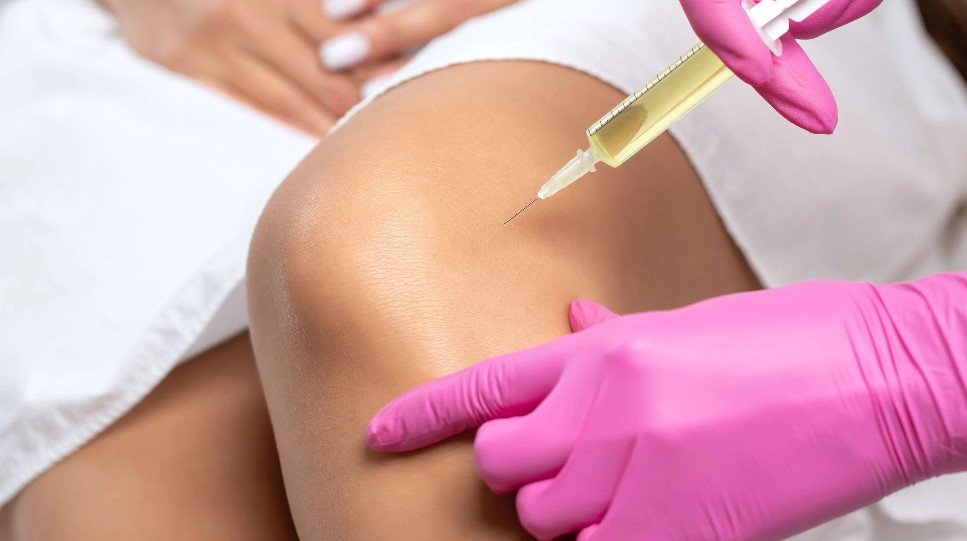Facial PRP (Platelet-Rich Plasma) therapy, a popular cosmetic treatment known for its rejuvenating properties, often raises questions about its associated discomfort. While the procedure, which involves injecting PRP obtained from the patient’s blood, sounds daunting, it’s generally a painless procedure. Clinics like Rejuvenceclinic emphasize using numbing creams and advanced techniques to minimize pain. The level of discomfort experienced can vary among individuals, but most report only mild sensations akin to a pinprick or light pressure during the treatment.
What is PRP Facial Treatment?
The PRP (Platelet-Rich Plasma) Facial Treatment is a cosmetic technique that stimulates skin renewal by using the patient’s blood. A small amount of the patient’s blood is drawn, processed to separate the platelets, and then the platelet-rich plasma is injected again into the patient’s face.
This procedure improves overall skin texture, helps repair damaged tissue, and increases collagen production, all of which contribute to a more youthful, glowing complexion. It is well-known for treating skin issues like fine lines, wrinkles, and scars naturally and effectively.
Understanding the PRP Facial Treatment Procedure
Understanding the PRP (Platelet-Rich Plasma) Facial Treatment procedure involves several key steps, each contributing to the treatment’s effectiveness in skin rejuvenation.
- Blood Collection: The procedure begins with collecting a small amount of blood from the patient, typically drawn from the arm, similar to a routine blood test.
- Separation of Plasma:The collected blood is then placed in a centrifuge, which spins the blood at high speeds. This process separates the platelets and plasma from the other blood components.
- Preparation of Platelet-Rich Plasma:The concentrated platelets are extracted from the separated components. This platelet-rich plasma (PRP) is rich in growth factors essential for skin healing and regeneration.
- Application on the Face: The patient’s facial skin is usually prepared before applying the PRP, often through a microneedling process. This involves creating tiny punctures in the skin using fine needles to stimulate skin repair and enhance the absorption of PRP.
- Injection of PRP:The PRP is then applied or injected into the facial skin, focusing on areas that require treatment, like wrinkles, scars, or overall rejuvenation.
- Healing and Collagen Production:Once injected, the growth factors in the PRP stimulate the body’s natural healing process, enhancing collagen production and rejuvenating the skin. This leads to enhanced skin texture, tone, and elasticity.
- Post-Procedure Care: Patients may experience mild redness or swelling after the treatment, which typically subsides quickly. As the practitioner advises, proper post-procedure care is important for optimal results.
What Makes PRP Facial Treatment Painless?
Topical Anesthetics
Topical numbing creams are a standard practice in PRP facial treatments. These creams are applied to the skin before the procedure, significantly reducing any sensation or pain from the microneedling and injections.
Minimally Invasive Technique
Unlike more invasive cosmetic procedures, PRP facial treatments involve only superficial skin penetration. The microneedling and injections are relatively shallow, resulting in less pain than deeper surgical interventions.
Fine Needles for Injection
The PRP is injected using excellent needles. These tiny needles cause minimal discomfort, as they are designed to be gentle on the skin and cause less trauma than larger needles.
Short Duration of Procedure
The entire PRP process, including the blood draw, preparation of the plasma, and the facial application, is relatively quick. The shorter duration of the actual skin contact part of the procedure helps in reducing the overall discomfort.
Personalized Approach
Practitioners often tailor the procedure to the patient’s comfort level and skin sensitivity. Adjustments in needle depth during microneedling and the careful application of PRP can further minimize discomfort.
Fast Recovery
Post-procedure recovery from a PRP facial is usually quick, with minimal pain, swelling, or redness. This quick healing process makes the overall experience less painful.
Technological Advancements
The continuous advancement in PRP preparation and application technologies also contributes to a more comfortable experience. Devices used for PRP extraction and application are becoming more efficient and patient-friendly.
Pain Management Techniques
Topical Anesthetics
Before the procedure, a topical anesthetic cream can be applied to the face to numb the area. This cream significantly reduces sensation in the skin, making the process of microneedling and PRP injection more comfortable. It’s typically applied 30 minutes before the procedure to ensure maximum effectiveness.
Ice Packs
Applying ice packs or cold compresses before and after the procedure can help numb the area and reduce pain. This method is particularly useful in reducing any swelling or discomfort post-treatment. The cold not only helps with pain but also minimizes inflammation.
Distraction Techniques
Distraction techniques like listening to music, deep breathing, or engaging in conversation can help shift focus away from the procedure. These methods can be particularly effective in reducing pain perception for patients who feel anxious or nervous about the treatment.
Proper Aftercare
Following the recommended aftercare instructions can help manage pain and discomfort after the procedure. This includes avoiding harsh skin products, not touching or rubbing the face unnecessarily, and keeping the skin hydrated. Proper aftercare can expedite the healing process and reduce post-procedure sensitivity.
